- Advertising
How To Increase Your ATT Opt-in Rates

The State Of ATT Opt-in Rates
Ever since Apple’s ATT (App Tracking Transparency) was first announced, the industry started speculating what the ATT opt-in rate would be. Initial opinions seemed to see the glass half empty, expecting opt-in rates to fall between 0-20%. Today, a year after the release of iOS 14.5, opt-in rates are looking a little better: the latest insights from InMobi Exchange indicate the global opt-in rate is 35%, calculated based on the percentage of ad requests with an IDFA (Identifier for Advertisers).
However, for a user to be tracked with IDFA, they first need to choose the “Allow” option for both the advertiser and the publisher/app where the ad is being shown. It’s important to note that even when using a mobile measurement platform (MMP) for attribution data, app marketers will only get device-level post-install metrics once they get the users to opt in to the advertised app as well.
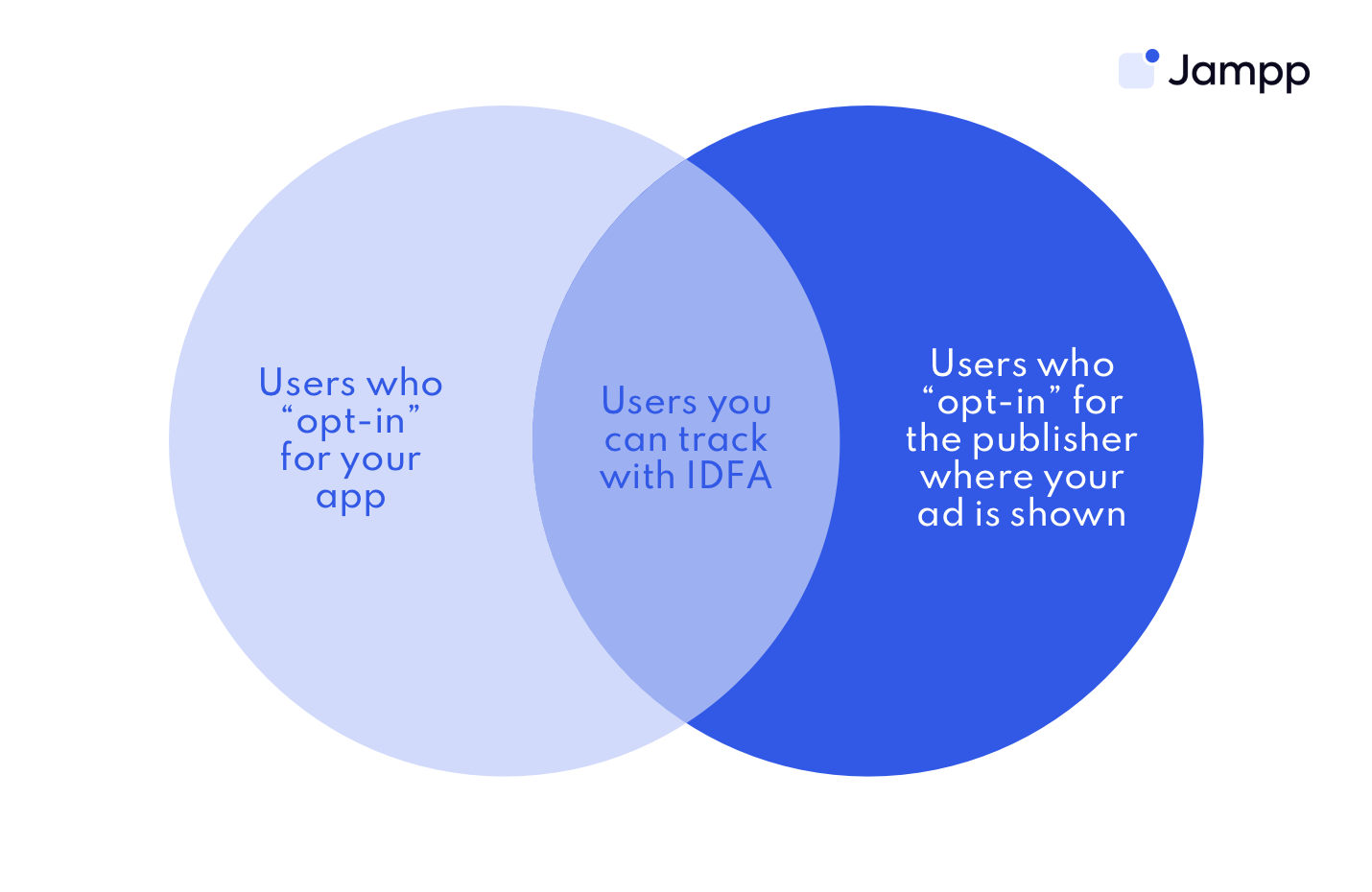
App marketers should monitor advertiser-side data (as a benchmark to be aligned with other apps) and publisher data (to estimate how ATT will impact their tracking capabilities).
The same applies to publishers: looking at ATT opt-in rates from both sides will help publishers understand whether they are above or below the industry standard, and how to make their traffic more valuable and appealing to marketers.
Why Should You Increase Your ATT Opt-in Rates?
While the industry has made a lot of progress in testing new attribution methods in the post-IDFA era, with the current setup, identifiable traffic is still highly desirable: IDFA offers data granularity that can be leveraged to understand user behavior and help optimize the performance of SKAdNetwork (aka SKAN, Apple's framework for tracking attribution of iOS advertising campaigns).
Increase Your ATT Opt-in Rates In 3 steps
1. Implement an ATT prompt and pre-prompt
An ATT prompt is a pop-up requesting users to allow or deny access to their IDFA. Implementing this prompt is mandatory if you’re looking to track users or collect their IDFA data.
The only customizable element within this pop-up is a “purpose string” which allows marketers and publishers to explain why they’d like to track the users. Other than that, prompts have a fixed layout and design.
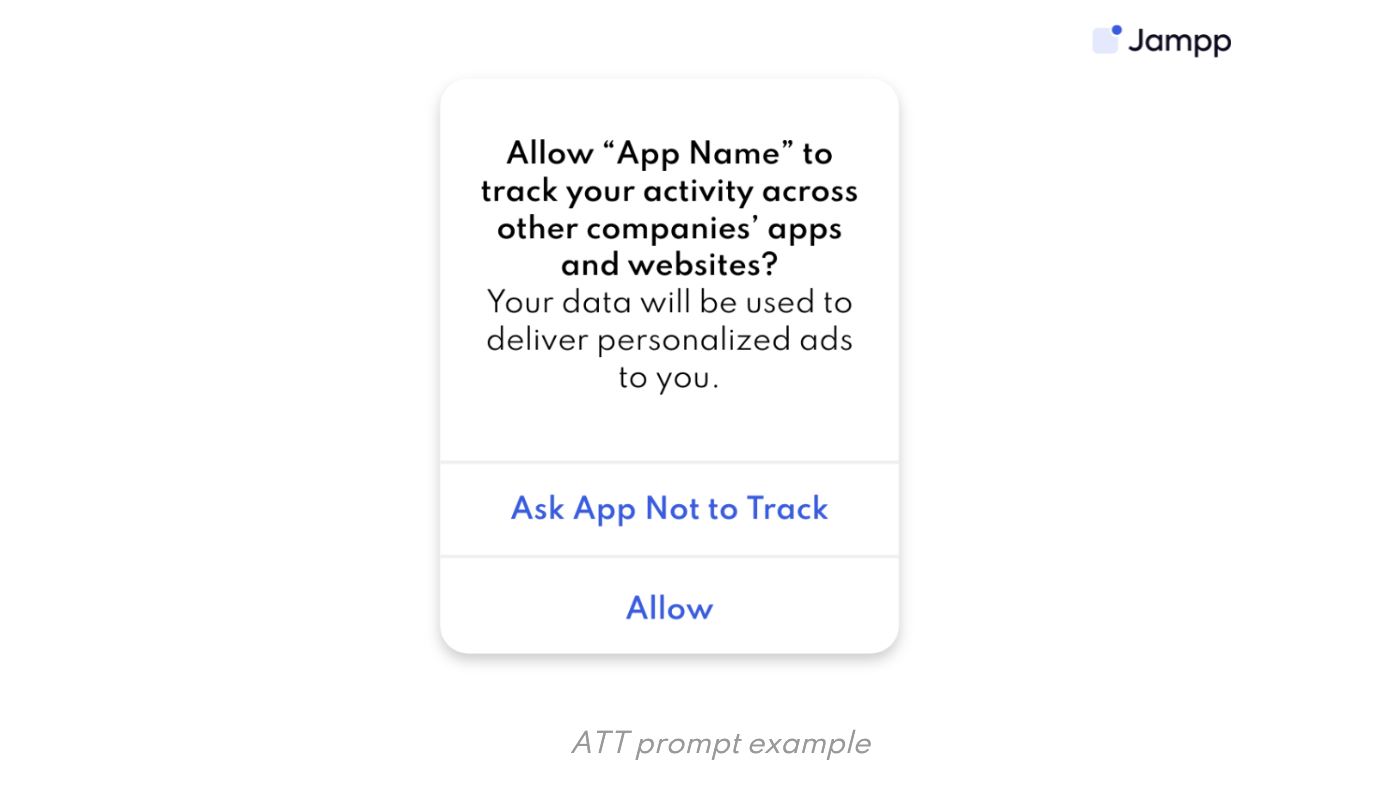
A pre-prompt or context screen is a different type of pop-up message shown to app users right before Apple’s prompt is displayed. This screen educates users on why they should choose the “allow tracking” option within the prompt. While pre-prompts are not mandatory, implementing them can help convince users to agree to be tracked; they essentially give you a little more room to explain the value to the user.
Unlike prompts, pre-prompts are created and designed by publishers and apps, providing more flexibility to craft and showcase the message you want to communicate.

User privacy and transparency are at the core of what we do. In spite of the impact iOS 14.5 had on our industry, we see this initiative as a step forward toward a safer environment. Along the same lines, it’s important to be transparent with users, telling them what their data will be used for and how this favors them—and ATT prompts and pre-prompts allow us to educate them on these aspects.
Each advertiser/publisher has unique challenges, so every company should focus on identifying which benefits will be relevant to their specific audience. For example:
- If your app is a mobile game, you can say: “Sharing your data will allow you to save your progress and keep playing across multiple devices”
- If your audience relies on your app’s social features, try using: “This allows us to connect you with your friends”
- If in-app advertising represents one of the main incomes of your mobile business, say: “This will help keep our app FREE”
2. Stick to Apple’s guidelines
When implementing pre-prompts for your app, always consider Apple’s guidelines: there are certain designs and elements that could lead to rejection by App Store Review. Here’s what you should bear in mind:
- Don’t include multiple buttons or CTAs (Call To Action): Stick to one button titled “Continue,” “Ok” or any other synonym. Refrain from using the word “Allow” as it might be misleading.
-1.png)
- Don’t add additional actions or clickable elements: Offering users a way to leave the pop-up screen without viewing the prompt with an option to close or cancel is not allowed.
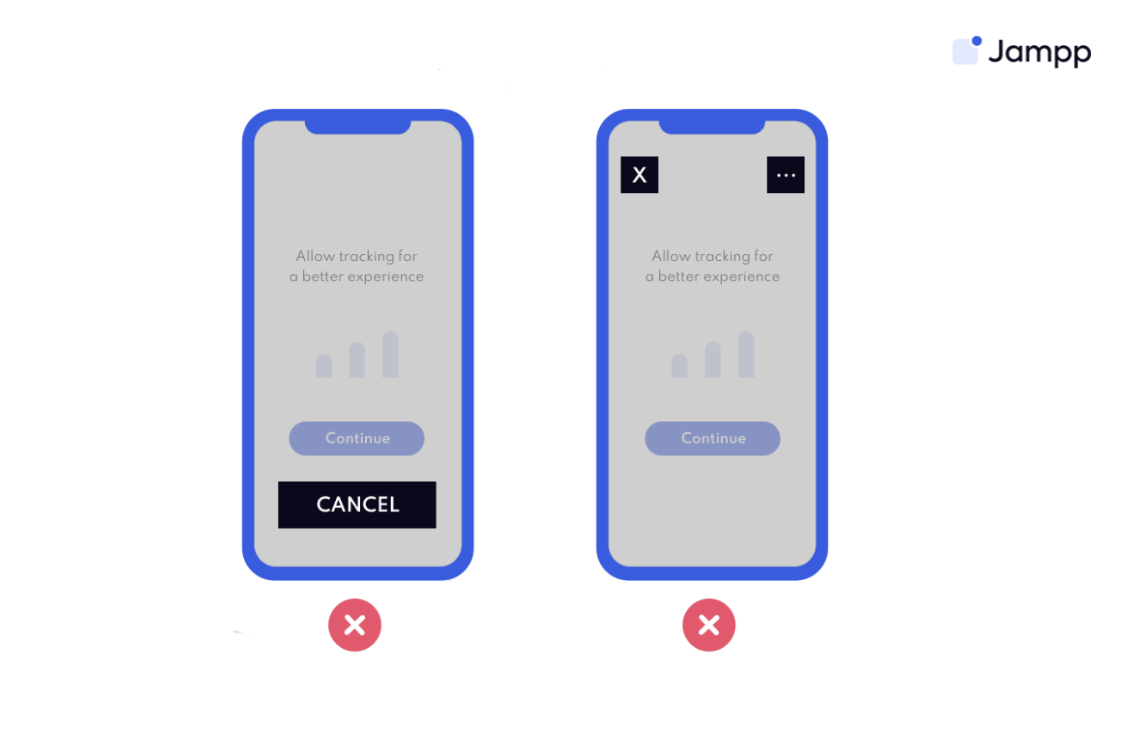
- Don’t offer rewards or incentives: Asking users to grant their permission in exchange for rewards, discounts, credits, or any other benefit is forbidden.

- Don’t limit access to content or functionalities until users grant access to their data: You mustn’t withhold app features or restrict user experience in any way to compel users to tap “Allow.”
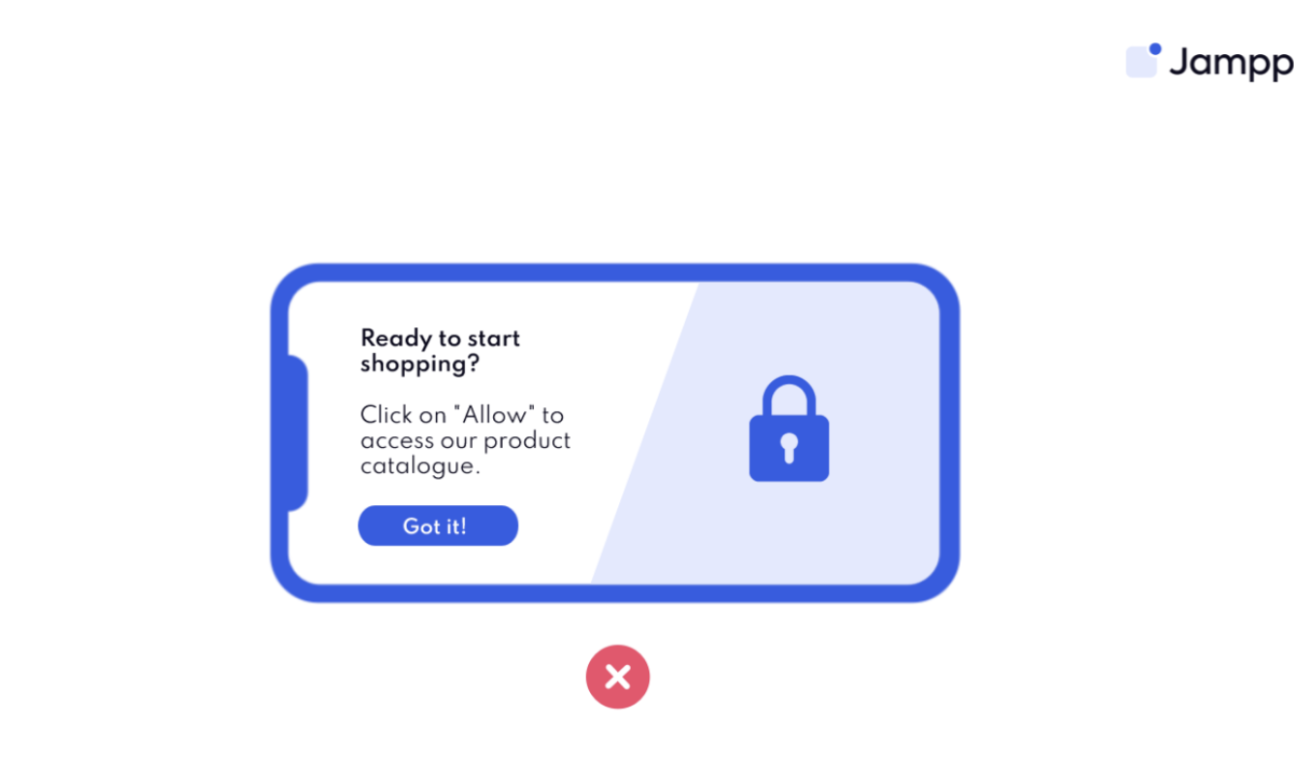
- Don’t include and/or modify one of Apple’s prompts: While we’ve seen some apps showing images of a standard prompt with annotations or design edits, this practice is not approved by Apple.

3. Make it work for your app
While all apps should follow Apple’s guidelines for prompts and pre-prompts, different verticals are creating different contextual screens based on their unique challenges: some make their pre-prompts more informative, some focus on visuals, and others rely on specific keywords.
Let’s take a look at ATT pre-prompts for different verticals.
Mobile games
Gaming apps have some of the most visually striking pre-prompts, always making these screens match the look and feel of the game to maintain an immersive user experience.
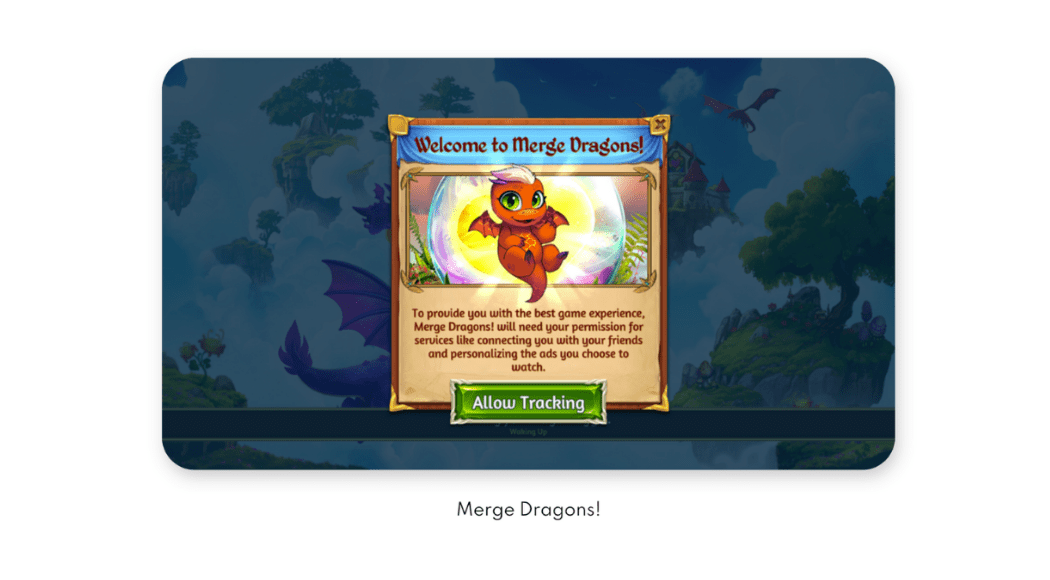
This example from Merge Dragons shows us how to effectively make a pre-prompt match the game’s interface.

Subway Surfers’ prompt not only matches the game’s look and feel, but also does a great job at explaining everything users need to know about the ATT prompt:
- Why it’s important for the game: it helps Subway Surfers support their business.
- Why it should matter to users: this will make the ads they see as relevant as possible.
- Why they shouldn’t be worried about this: if they change their minds, they can update their choice at any time.
Commerce apps
For Commerce and Shopping apps we’re seeing different strategies as regards design, but a similar approach in terms of the messaging: keeping it short and sweet. Their goal is to convey the main message in a couple of lines, going straight to the point.
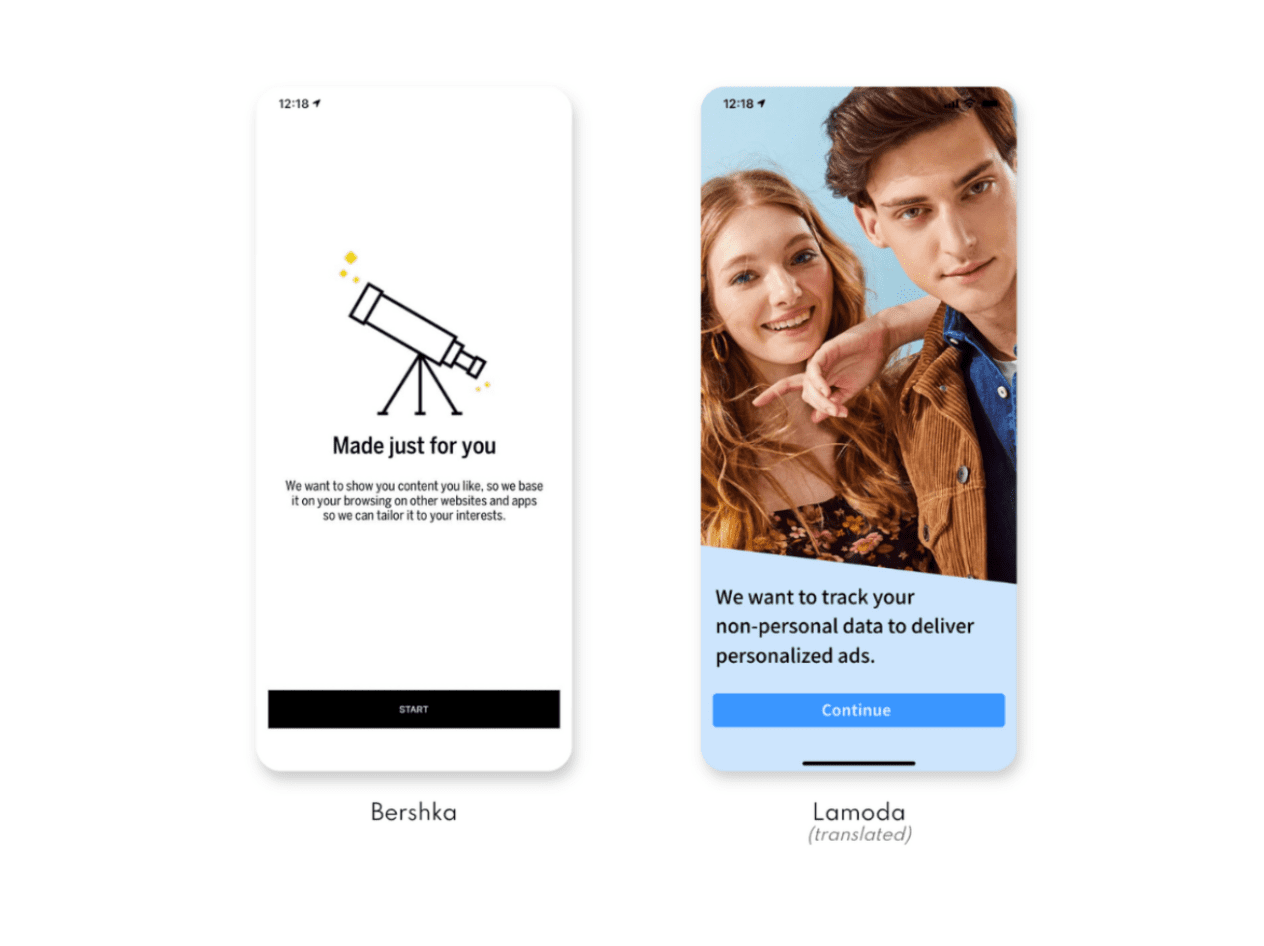
While some brands, like Bershka, opt for a catchy title, others, like Lamoda, grasp users’ attention through aspirational pictures.
Finance apps
Privacy and security are always top-of-mind for Fintech apps like banks, wallets, or crypto platforms. Pre-prompts across this vertical often make a point to reinforce this notion. For example, Coinbase’s message reads “we take your privacy seriously” and avoids mentioning sensitive words like “tracking”.
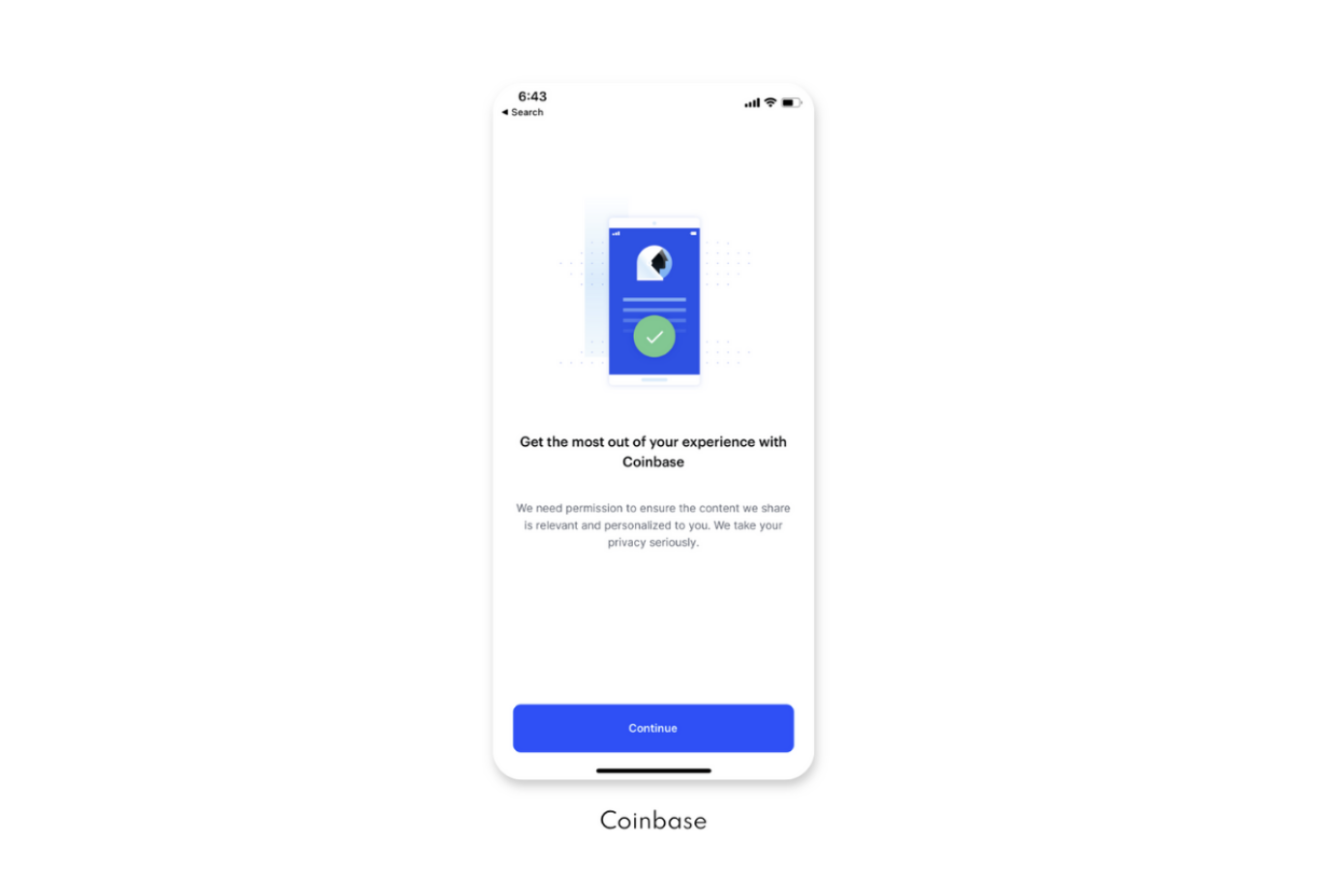
IDFA vs SKAN
It’s not an either-or scenario, as you really should run both for optimal results. While ATT opt-in rates didn’t turn out to be as low as expected, there’s still a relevant share of IDFA-less traffic. However, SKAdNetwork adoption continues to grow: 81% of ad requests on InMobi Exchange are compatible with SKAN 2.2.
“In this period of transition, the best approach for marketers and publishers looking to drive success on iOS is two-fold: on the one hand, they should be improving their communication with users to get them to understand what ATT means and the value they get out of opting-in; on the other hand, they should also continue to optimize their SKAN solutions and campaigns to engage users in non-IDFA traffic—especially now that Apple has announced many improvements for the upcoming SKAN 4.0 framework.” — Franco Passamonte, Sr. Product Manager, Jampp
“In today’s privacy-first world, it’s important for both the buy-side and the sell-side to embrace these changes and implement the best tools and solutions. For the foreseeable future, this will mean straddling multiple targeting and measurement solutions on both sides. But having a thoughtful approach to addressability and making use of all available technology that's privacy-safe, publishers can effectively leverage the programmatic ecosystem to continue monetizing their apps and provide users with free-to-download apps.” — Utkarsh Sinha, Head of Product Marketing, InMobi Exchange.
This blog post was written in collaboration with Jampp.
About Jampp
Jampp is a programmatic advertising platform used by the most ambitious companies to accelerate their mobile businesses.
As a leading mobile DSP for the post-IDFA era, Jampp delivers enhanced performance through all the traffic and attribution types including SKAN, probabilistic attribution, and IDFA to drive campaign success.
Stay Up to Date
Register to our blog updates newsletter to receive the latest content in your inbox.









